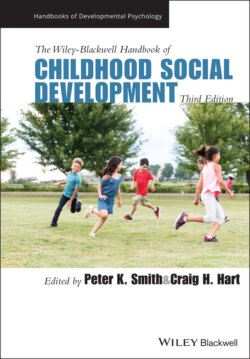Читать книгу The Wiley-Blackwell Handbook of Childhood Social Development - Группа авторов - Страница 30
Emotional development
ОглавлениеAdvances in this domain stemmed partly from the creation of coding schemes that reliably differentiated infants’ and children’s emotional expressions, and from the implementation of technologies that indexed emotion’s physiological referents (e.g., heart, brain, and CNS monitoring instruments). These innovations paved the way for researchers to distinguish among basic emotions (e.g., joy, fear, sadness) and self‐conscious emotions (e.g., pride, guilt), and to chart developmental milestones (e.g., emergence, stability) and gauge individual differences in emotional reactivity (Lewis, 2014).
Efforts to define and measure individual differences in emotions (e.g., forms expressed, intensity, regulation) and relate them to other aspects of children’s development produced important discoveries. Associations were found between the emotions children frequently expressed and their temperament and adjustment. Children prone to express positive affect, for example, were found to have outgoing temperaments and manifested better adjustment outcomes (e.g., higher self‐esteem, social competence). In contrast, negative affectivity was linked with inhibited and difficult temperaments and a range of adjustment problems (Rothbart, 2007). Similar differences in temperament and adjustment were found for children who evidenced greater as opposed to lesser ability to manage their emotions (e.g., self‐regulation, effortful control; Denham et al., 2011).
